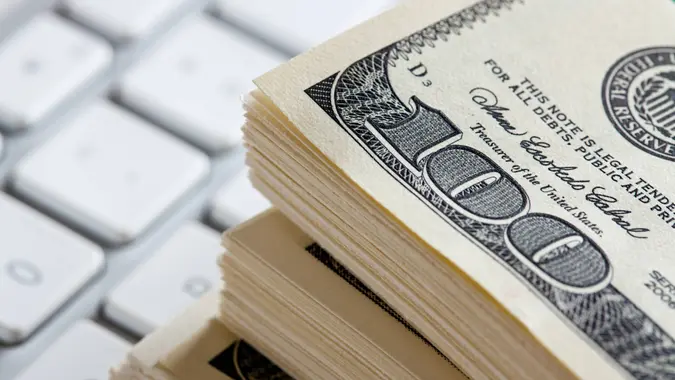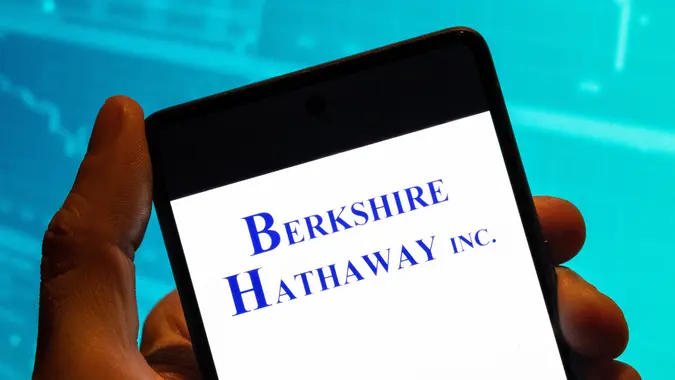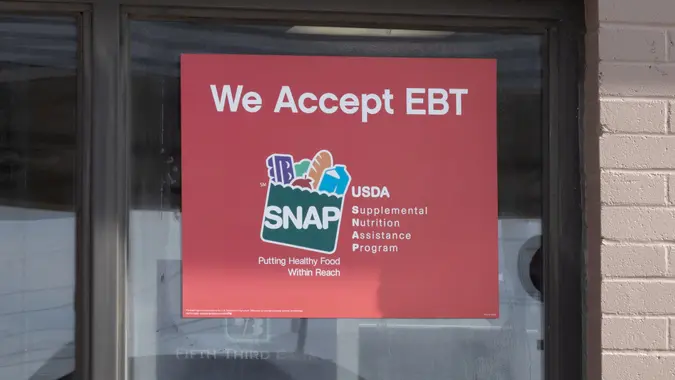5 Steps To Create a Finance Vision Board for Achieving Your Money Goals

Commitment to Our Readers
GOBankingRates' editorial team is committed to bringing you unbiased reviews and information. We use data-driven methodologies to evaluate financial products and services - our reviews and ratings are not influenced by advertisers. You can read more about our editorial guidelines and our products and services review methodology.

20 Years
Helping You Live Richer

Reviewed
by Experts

Trusted by
Millions of Readers
The recent Ramsey Solutions State of Personal Finance survey identified prioritizing saving and getting rid of debt as some of the top 2025 resolutions. However, staying motivated and focused to work toward such goals isn’t always easy when you’re busy juggling life.
A finance vision board is one creative and fun tool that can regularly remind you of which money goals you’d like to achieve, and how they’ll improve your life. Making this type of visual collage also gives you the chance to reflect on the steps required to reach your goals.
Here are five steps you can take to create your finance vision board.
Think About Your Money Goals
You should first determine and jot down your short- to long-term money goals. The Consumer Financial Protection Bureau recommends SMART goals that have a specific intent and timeline, are personally meaningful and are something you can measure and realistically achieve.
Examples include saving up a $20,000 down payment for a home in three years, having $1,200 in your emergency fund in six months and wiping your $3,000 credit card debt in one year.
When determining goals, look at your finances to ensure they’re doable and work out steps for achieving each. For instance, you might review your budget and make room to save $200 per month for your emergency fund goal. Also, identify the benefits you’ll enjoy when you achieve that goal, such as having more financial security and relying less on debt.
Decide on a Format
With your goals identified, you can now decide whether you’d prefer a physical or digital finance vision board.
You might like the physical form, such as a posterboard, if you’re a crafty person who enjoys cutting out and gluing pictures, adding items like glitter and customizing your board in a hands-on way. This is also a good format if you want the board in a fixed place.
The digital version can be more convenient, flexible and shareable. You won’t have to worry about buying and using craft materials since you can simply use online tools like Canva or download templates to make one.
Choose Your Vision Board Items
Think about your money goals to identify pictures, text, charts and other items that represent them and the changes they’ll bring to your life. They should be personal and have an emotional appeal to increase motivation.
Say your goal is paying off a high-interest credit card. To visualize a better life after the debt, you could gather images of a dream vacation, peaceful scenery and cash representing savings. You can also use quotes from money experts, personal affirmations, relevant statistics or even snippets of financial documents that show why the debt must go.
Feel free to be creative and tap into your emotions, but keep all visuals related to the financial goal. You should also limit items to avoid too much clutter on your finance vision board; Discover suggests picking around 10 to 15 items.
Put It All Together
Whether you’re making a physical or digital finance vision board, you should arrange the items in a logical, balanced and visually appealing way.
If you’re focusing on one goal, you might have a large center image identifying the goal and then arrange items around it based on importance, theme and your preferences. For multiple goals, you might create a timeline layout for short- to long-term goals, or split the board into separate goal-focused sections to make everything easier to follow.
Additionally, feel free to add labels and descriptions to your images to explain how they relate to your goal. You can even jot down key money principles, or briefly list steps to reach your goal.
Use Your Board While You Make Progress
After finishing your finance vision board, put it somewhere you’ll look at regularly for motivation as you work toward the pictured money goals. You might also show it to others who can help hold you accountable when you get off track or celebrate when you make progress.
Keep in mind that you can update your board as your money goals and financial situation change. For example, you can replace the items for your completed debt payoff goal, or change up the pictures to better describe what motivates you for a current goal.
More From GOBankingRates
 Written by
Written by  Edited by
Edited by 
























